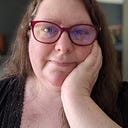
The Bizarre History of Santa Rosa’s Fountaingrove Neighborhood
In the mid-1990s, I researched and wrote a book called Sacred Sonoma, which looked into the history of odd and/or haunted spots in Sonoma County, California. One of those sites was the Fountaingrove area, and particularly the winery and round barn that gave the neighborhood its name. In light of this week’s massive fires, I’m sharing that chapter, from the updated 2007 edition of the book:
The Fountaingrove area was settled in the 1800s by Thomas Lake Harris, the first of a wave of Utopians to come to Sonoma County. Harris established a commune on the site in 1875 called New Eden of the West, part of his Brotherhood of New Life project. The colony included 1,400 acres of land (purchased for a mere $21,000), upon which he constructed a number of buildings, including a book press and a winery that produced some 70,000 gallons of wine in 1886.
His beliefs included the idea of a deity that was both male and female. Through something Harris called “Divine Respiration,” people could commune directly with this god. In addition, he taught that each person has a spiritual counterpart, and that the only way to identify that counterpart is to physically consummate with them.
Rumors of wild sexual liaisons on the utopian hillsides spread to the neighbors, who eventually complained to city officials about the goings-on at Fountaingrove. But the real undoing of the settlement may have been through reporter and Christian Scientist Alzire Chevalier, whom Harris invited to Fountaingrove in 1891. Harris propositioned Chevalier, hoping she might be his spiritual counterpart; she declined. It is said, too, that she discovered Harris with his feet in the lap of his secretary, a position he insisted was one that encouraged Divine Respiration. Chevalier dug deeper and discovered other transgressions on Harris’ part, publishing her findings in the San Francisco Chronicle.
After almost 20 years on the site, Harris was run off the land in 1892 by local Christian groups who opposed his mysticism and arcane ways and who accused him of making sexual advances on his followers. He moved to San Diego with his wife in 1909, and remained there until his death in 1916.
The Fountaingrove charter allowed that the last member of the New Eden group to remain on the land would inherit the property. This person was Kanaye Nagasawa, who lived on the land until his death. Nagasawa, among other things, built the famous round barn and traded viticultural information with Luther Burbank. The Exclusion Act, however, prevented Nagasawa from leaving the land to his heirs when he died. The land fell into county hands and has since been divided and sold to various individuals and businesses.

As of 2007, few of the original Fountaingrove buildings remain. Most have burned down or collapsed over the years. The exception is the winery, which was built of stone and managed to escape most of the forces of time. Some locals report that these buildings house a particularly negative set of energies. Inside the main building, according to some, there is an extremely dark energy one that does everything it can to prevent people from coming inside. Those who have explored the site say these energies get stronger and more unsettling at night.
These buildings are heavily covered with graffiti, some of which reflects the folklore associated with the area: tags from local gangs; the word “magic;” the phrase “you’re dead;” and, over the doorway to one room, the phrase “Ye who enter here, abandon all hope,” paired with a drawing of a skull with fangs and no lower jaw. There are also remnants of Masonic and Oddfellows symbols, burned-down candles, and sigils that appear to have been drawn there more recently.
Visitors have reported hearing a number of voices that seemed to suggest the presence of spirits. In one room in a side building to the north of the main winery, one man heard what sounded like an adolescent girl crying, an elderly man speaking in a raised voice, and another, older adolescent girl talking.
Sonoma S.P.I.R.I.T., a paranormal investigations group, has recorded a number of electronic voice phenomena at the winery, including voices saying “shut up,“ “come back,“ “shut up right now,” or yelling. Others appeared slightly friendlier; one male voice asked investigators, “how are you?”
It is possible that some pre-existing energy at the Fountaingrove site drew Harris to the location originally, and that the commune’s activity may have infused the place with an additional kind of primal sexual energy that has turned increasingly negative with time and misuse. British earth mysteries expert Tom Graves wrote about a similar phenomenon, explaining that sometimes the energy of a place can turn for the worse when visitors unwittingly (or intentionally) abuse the powers there. Sacred sites can be altered dramatically by the way visitors treat them.
It is interesting to note that a few hundred yards to the west of the winery buildings there is a tree ring made up of pines and palms. While the buildings are alive with malevolent energies, there is a balancing positivity in this small grove.
Source for the historical information in this chapter: Bjerklie, Steve: “Inventing Eden: On the Trail of Sonoma County’s Century-Long Search for Utopia,” The Sonoma County Independent. Santa Rosa, California. July 4–10, 1996.
